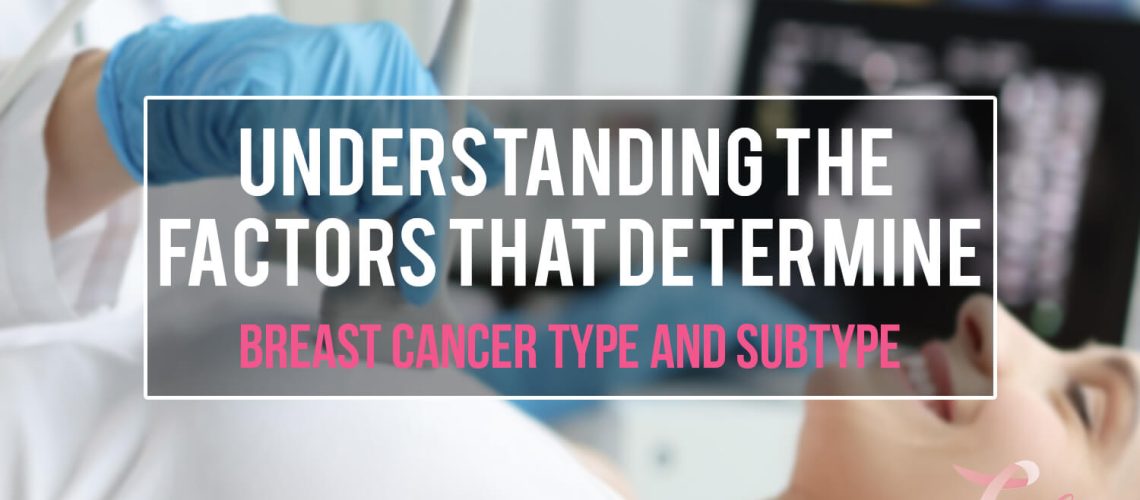Breast cancer is a complex disease affecting millions of women worldwide. It can be overwhelming to understand, given its various types, subtypes, and treatment options. This article shall explore the different types of breast cancer and how tumor characteristics, hormone receptor status, and HER2 status determine a woman’s cancer type.
Invasive vs. Non-Invasive Breast Cancer: Understanding the Basics
In general, breast cancer can be categorized into two groups: invasive and non-invasive.
Non-Invasive Breast Cancer: Staying Within the Breast
Non-invasive breast cancer remains in the ducts of the breast and does not spread into the surrounding breast tissue or other body parts. This type is also called Ductal Carcinoma in Situ (DCIS), or intraductal carcinoma and it IS CANCER. Some of these terminologies can be confusing but all of those terms can be used interchangeably. Further confusing is a term called Lobular Carcinoma in Situ, or LCIS. While it sounds similar to DCIS, LCIS IS NOT CANCER. It only serves as a marker for an increased risk of developing breast cancer by 1% per year. These two entities are not to be confused.
Invasive Breast Cancer: The Spread of Cancer Into the Surrounding Breast Tissue
Invasive breast cancer spreads beyond the structure that is started from (typically ducts or lobules) and into the surrounding tissue, increasing the risk of spreading to lymph nodes and other parts of the body.
Common Types of Non-Invasive Breast Cancer
DCIS is a non-invasive form of breast cancer that occurs in the ducts of the breast. It is typically detected early, but can be extensive and is usually treated with surgery and sometimes radiation therapy.
Infiltrating Ductal Carcinoma (IDC) and Infiltrating Lobular Carcinoma (ILC): The Most Common Types of Invasive Breast Cancer
Infiltrating ductal carcinoma (IDC) and infiltrating lobular carcinoma (ILC) are the most common types of invasive breast cancer.
Infiltrating Ductal Carcinoma (IDC): The Most Common Type of Invasive Breast Cancer
IDC is the most common invasive breast cancer, accounting for 80% of all breast cancer cases. It begins in the breast ducts and spreads to the surrounding tissue.
Infiltrating Lobular Carcinoma (ILC): A Less Common Type of Invasive Breast Cancer
ILC is a less common type of invasive breast cancer that affects the lobules of the breast. It can be challenging to detect because it often does not form a noticeable lump until it is quite large.
Determining the Type of Breast Cancer: Understanding Tumor Characteristics, Hormone Receptor Status, and HER2 Status
Tumor characteristics, hormone receptor status, and HER2 status determine a woman’s breast cancer type and subtype.
Hormone Receptor Status: Indicators of How Hormones Affect the Growth of Cancer Cells
Hormone receptor status refers to whether the cancer cells have estrogen and/or progesterone receptors expressed on their cell surface. This is determined by a pathologist after the biopsy has been performed. This information is crucial because hormone-blocking therapy can effectively treat hormone receptor-positive breast cancer and prevent breast cancer recurrence. Normal breast tissue has estrogen and progesterone receptors on its surface; therefore, this is a better-acting type of cancer than when hormone receptors are negative.
HER2 Status: Indicators of How the HER2 Gene Affects Cancer Growth
HER2 status refers to whether the cancer cells overproduce a protein called HER2. HER2-positive breast cancer can be treated with targeted therapy, but this is also combined with chemotherapy, as these tumors grow faster and spread faster than other types of breast cancer.
Conclusion: Understanding the Different Types of Breast Cancer is Key to Making Informed Decisions About Treatment
To make an informed decision about the type of treatment a woman needs, it is essential to understand the different types of breast cancer. Women diagnosed with breast cancer can work with a healthcare provider to determine the most effective treatment for their situation. With the knowledge of the types of breast cancer, a woman can take a proactive approach to her healthcare, optimize her chances of successful treatment, and improve her overall health.
Sources:
- American Cancer Society. (2021). Types of breast cancer. Retrieved from https://www.cancer.org/cancer/breast-cancer/types-of-breast-cancer.html
- National Cancer Institute. (2021). Understanding breast cancer. Retrieved from https://www.cancer.gov/types/breast/patient/breast-treatment-pdq
- Susan G. Komen. (2021). Types of breast cancer. Retrieved from https://ww5.komen.org/BreastCancer/TypesofBreastCancer.html



